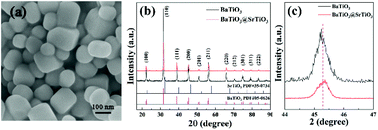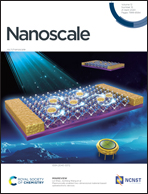Suppressed polarization by epitaxial growth of SrTiO3 on BaTiO3 nanoparticles for high discharged energy density and efficiency nanocomposites†
Abstract
In order to meet the increasing demand of integration and miniaturization of electronic components, capacitors with high energy density are urgently needed. In this work, a strategy of suppressing interfacial polarization for obtaining enhanced energy density and efficiency polymer based nanocomposites is proposed. This strategy is conducted by epitaxial growth of a SrTiO3 layer with a moderate dielectric constant on the surface of a BaTiO3 core to form a kind of novel filler and compositing with the P(VDF-HFP) matrix to prepare dielectric nanocomposites. The SrTiO3 shell could effectively confine the mobility of charge carriers to enhance the dielectric strength of the composites and improve the energy efficiency by reducing the Maxwell–Wagner–Sillars (MWS) interfacial polarization and space charge polarization between the BaTiO3@SrTiO3 fillers and the P(VDF-HFP) matrix due to their similar crystal structure and lattice parameter. The nanocomposite containing 1 vol% BaTiO3@SrTiO3 nanoparticles achieved a discharged energy density of 13.89 J cm−3 and an energy efficiency of 63% at 494.7 kV mm−1, which are superior to 9.96 J cm−3 and 50% of BaTiO3/P(VDF-HFP) nanocomposites with the same loading, respectively, and its discharged energy density is 69% higher than 8.2 J cm−3 of the neat P(VDF-HFP) at 401.5 kV mm−1. This work provides an effective way for nanocomposite capacitors with high energy density and efficiency.



 Please wait while we load your content...
Please wait while we load your content...